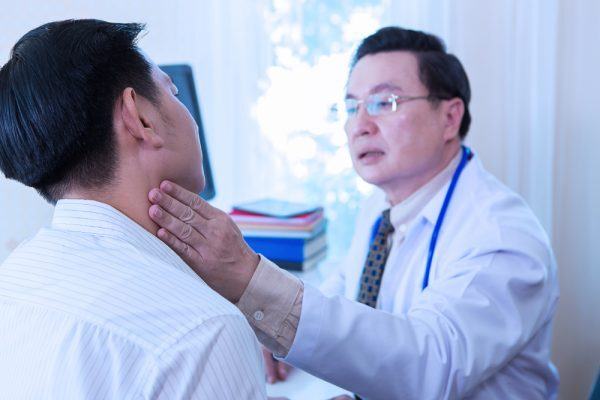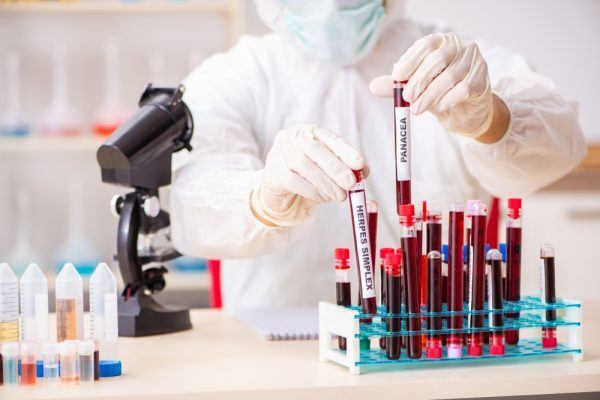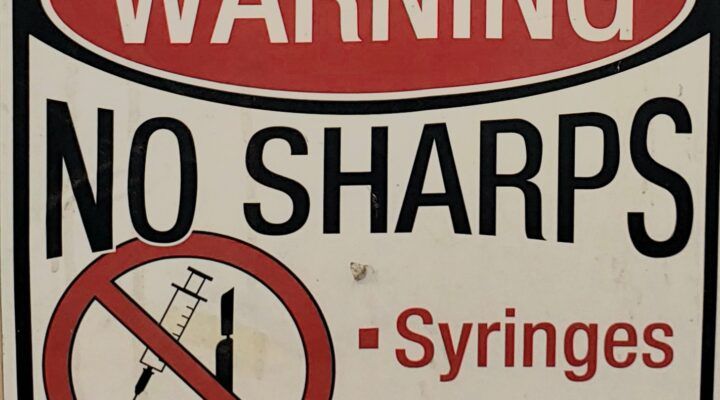Many Workers encounter needles and sharps in the workplace. Many Workers are punctured or are cut by these items in the workplace. These punctures or cuts can give rise a work-related injury.
Per the CDC, “[o]ccupational exposure to bloodborne pathogens from needlesticks and other sharps injuries is a serious problem, resulting in approximately 385,000 needlesticks and other sharps-related injuries to hospital-based healthcare personnel each year. Similar injuries occur in other healthcare settings, such as nursing homes, clinics, emergency care services, and private homes.”
Needlestick and Sharps Injuries can occur in many different settings as well. These items are used by Individuals who have ongoing medical treatment. They are frequently used by these Individuals while at home, at work or while traveling. They are even used to treat pets. These Individuals may have ongoing medical conditions such as allergies, arthritis, cancer, diabetes, hepatitis, HIV/AIDS, infertility, migraines, multiple sclerosis, osteoporosis, blood clotting disorders, and psoriasis, which necessitate the usage of either a needle or sharp. CDC.
This article will discuss needle stick and sharps, how work injuries can occur, what occupations are risk for needle stick or sharp injuries, what Labor Code Sections may assist Injured Workers who sustain needle stick or sharp injuries and caselaw concerning needle stick or sharp injuries.
What Types of Medical Conditions Can Rise from Needle Sticks or Sharp Injuries?
Per the CDC, “[s]harps injuries are primarily associated with occupational transmission of hepatitis B virus (HBV), hepatitis C virus (HCV), and human immunodeficiency virus (HIV), but they have been implicated in the transmission of more than 20 other pathogens.” Beyond, blood borne transmissions, there are many Workers who have a strong emotional reaction towards being stuck or punctured. These emotional reactions can give rise to a Psychiatric Injury. It is noted that “On needlestick claims, at least one treatment with an ICD-9 code in the psychological range was observed on 94 of the 3,338 nonhealthcare worker claims or about 2.8% of these claims.” However, the research noted that they could not “be sure that the psych counseling is directly related to the needlestick and not some other aspect of the claim.” Infection Risk from “Sharps” Injuries for Non-healthcare Workers Frank Neuhauser, University of California, Berkeley Glenn Shor, Department of Industrial Relations Rebecca Jackson, Department of Industrial Relations Report for: Commission on Health and Safety and Workers Compensation March 26, 2015
If an Injured Worker, as a result of a cut or puncture develops any of these conditions, they may make a work injury claim. Such a workers’ compensation claim will enable the Worker to claim benefits which can include monetary compensation, medical care, vocational rehabilitation and death benefits if indicated.
How Does It Happen?
Percutaneous exposures to blood and body fluids all through infected needle stick and sharps accidents are the main occupational hazard for morbidity and mortality from infections with blood borne pathogens. Magnitude and associated factors of needle stick and sharps injuries among health care workers in Dessie City Hospitals, north east Ethiopia Assen Wubshet, Kifle, Wubayehu, Aregawi BMC Nursing Vol 19, Article Number 31 (2020)
What Are Sharps?
Per the FDA, Sharps is a medical term for devices with sharp points or edges that can puncture or cut skin.
Items that can puncture or cut skin. This can include such items as auto injectors, broken vial preparations, connection needles, connection sets, infusion sets, lancets, needles, razors, scalpel, scissors, syringes, trocar puncture needle, and vacuum blood collection needle,
Where Are Sharps Encountered in the Workplace?
Per the FDA, Sharps “may be used at home, at work, and while traveling to manage the medical conditions of people or their pets, including allergies, arthritis, cancer, diabetes, hepatitis, HIV/AIDS, infertility, migraines, multiple sclerosis, osteoporosis, blood clotting disorders, and psoriasis.”
Per the FDA, these items may be disposed at homes, at work, at school, traveling or public places such as hotels, parks, and restaurants. Further, they can be disposed in household, public trash, and recycling bins.
Cleaners, Correctional Personnel, Dental Assistants, Dentists, Emergency Medical Technicians, Firefighters, Healthcare Workers, Homecare Workers, Housekeepers, Janitorial Workers, Lab Technicians, Landscapers, Nurses, Medical Assistants, Midwives, Paramedics, Physicians, Police Officers, Sanitation Workers, Security Personnel, and Sewage Workers.
“In California, almost 4/5ths of work-related needlesticks are reported to workers in the healthcare sector, a sector which employs 12% of California workers.” Infection Risk from “Sharps” Injuries for Non-healthcare Workers Frank Neuhauser, University of California, Berkeley Glenn Shor, Department of Industrial Relations Rebecca Jackson, Department of Industrial Relations
Report for: Commission on Health and Safety and Workers Compensation March 26, 2015. “Workers in the healthcare industry have a risk of needlestick injuries of about 1.8 needlesticks per 1,000 workers per year. That is about 14 times higher than the average for all other industrial sectors (0.13/1,000 workers).” Supra.
With respect to non-healthcare workers, “[n]eedlestick injuries, outside the healthcare setting are uncommon. About 1-in-10,000 workers outside healthcare will experience a needlestick in a given year. For specific industries (education, food & hospitality, and waste management) and occupations (custodial services and protective services), this risk is substantially higher. However, even in these specific industries and occupations, the risk of a sharps injury is l less than 1/1000 workers/year.” Supra.
Are There Any Labor Code Sections Which Assists Workers With These Claims?
Yes/ There is a Blood Borne Disease Presumption for certain Law Enforcement and Safety Personnel. See Labor Code Section 3212.8. For an article discussing the presumption, click here.
Is There Caselaw Involving Needle Stick Injuries?
Yes. Needle Stick Injuries can be a source of contention. See Rask vs. Fountain Valley, 2013 Cal.Wrk. Comp P.D. 279 (Panel Decision) which which there was a Nurse with multiple dates alleged for injury to liver, Hepatitis C. See Garcia vs. Felix Rivera 2020 Cal.Wrk. Comp P.D. LEXIS 35(Board Panel Decision) Dispute over amputation as being industrial when Applicant, a diabetic, stepped on needle while at home.
What If I Need Legal Advice?
If you would like a free consultation concerning any workers’ compensation case, please contact the Law Offices of Edward J. Singer, a Professional Law Corporation. They have been helping people in Central and Southern California deal with their worker’s compensation cases for 28 years. Contact us today for more information. Click Here.


